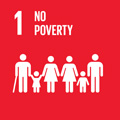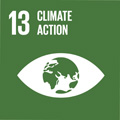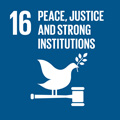- Docente: Mariella Lorusso
- Credits: 6
- SSD: L-LIN/11
- Language: English
- Teaching Mode: Traditional lectures
- Campus: Rimini
- Corso: Second cycle degree programme (LM) in Fashion Studies (cod. 6059)
-
from Nov 11, 2024 to Dec 10, 2024
Learning outcomes
At the end of the Course, the student will have a good command of the English language with a focus on fashion specific vocabulary and topics related to Fashion Studies. They will be able to read literature on the subject ( magazines etc.), write texts in English on fashion, and communicate verbally with experts in the field at an international level. In addition, opportunities will be given to develop research and oral presentation skills.
Course contents
The course is intended for first-year students of Fashion Studies -FAST- (international two-year master) who need to communicate in English for their studies and jobs in fashion. Its main purpose is to improve language and critical reading of English texts, and to encourage discussions and reflections on themes relevant to fashion.
To help students understand specific texts of the fashion sector and fashion studies linguistic and textual analysis of practical documents will be the main activity carried out.
The topics of the course will cover garment design and construction, fashion trends, future predictions, Fashion Studies and the decolonization of fashion.
Lessons will be held in English and partly in Italian for the translations.
Within the framework of Special Lessons, scholars and professionals are invited to hold seminars that students must attend.
Readings/Bibliography
for the final exam students will be tested on the following texts, film and assignments:
- Syllabus 2025:
- Special Terms
- The Decolonization of Fashion
- drawings (Evening Wear and Bridal Wear 1955-59, Accessories 1970-74)
-
(Pls note: we will use the Syllabus starting from the FIRST LECTURE; the Syllabus will be available starting from November 8th at Cartoleria Tecnica, Via Dante, 30 - ph: 0541 52 414)
- Dizionario della moda (inglese-italiano, italiano-inglese), Mariella Lorusso, Zanichelli, Bologna 2017
- Vogue On Gianni Versace, Charlotte Sinclair, Quadrille Publishing, London 2017 (Italian translation: Vogue. Gianni Versace Atlante, Bologna, 2022)
- "The Global ‘Wordrobe’. Ethnic Counter-Conquest in the Language of Fashion", Mariella Lorusso, ZMJ vol. 9.2, 2019 [https://zmj.unibo.it/article/view/9967]
- film
- THE TRUE COST by Andrew Morgan, Livia Firth (Bangladesh, USA, Cambodia, Cina, Danimarca, Francia, Haiti, India, Italia, Uganda, Regno Unito 2016, 92’)
Not in the exam: descriptions of fashion designers and their creations in the Syllabus.
The Italian version of Marnie Fogg, Fashion Design Directory, La Moda dalla A alla Z, Atlante, 2012 and 2020, is recommended for students who want to improve translation from English into Italian.
Teaching methods
Lectures, teacher-led discussion and assignments. Interaction with students, presentations, and role-play simulations.
Assessment methods
The final exam consists of a multiple choice / true-false written questionnaire: it will evaluate field-specific terminology and the ability of the student to understand and write about literature (books, journals, etc.) of this sector. The questionnaire will include:
- Vogue On Gianni Versacei;
- Syllabus 2025;
- "The Global ‘Wordrobe’. Ethnic Counter-Conquest in the Language of Fashion", Mariella Lorusso, ZMJ vol. 9.2, 2019 [https://zmj.unibo.it/article/view/9967]
- film: The True Cost
No difference between Attending and Non-attending students:
- written questionnaire (16 questions, 10 minutes)
- oral exam only in case students wish to improve the result obtained in the written questionnaire, they will have the opportunity to take an oral exam. In this case, the minimum mark obtained in the written questionnaire must be 26 and a single final mark will be given based on the average of the two marks obtained in the written exam and the oral exam. The oral exam consists in a presentation on topics related to the decolonization of fashion, cultural appropriation, indigenous fashion designers.
- Students who obtained at least 26/30 and want to improve their mark should plan an oral exam with the professor at least one week before
Students who sign up for the exam are kindly asked to cancel their name if they decide not to sit the exam or are unable to do so. Your cooperation is essential to guarantee optimal organisation of the exams and to ensure that students who are present do not have to wait unnecessarily.
PLS NOTE: students may refuse the mark obtained only once and should write an email to inform the teacher within one day.
PLS NOTE: The exam will be delivered via Platform EOL Unibo and log in through TEAMS (instructions at Unibo website or contact our tutor Prof. Stefano Zappi: stefano.zappi2@unibo.it).
The Italian grading system is based on a maximum of 30 points with 18 as the lowest passing grade. 30 Cum Laude may also be awarded.
Evaluation criteria will consider the following 3 aspects of the student’s performance: contents fidelity, language quality and quality of writing.
Marks will be attributed as follows (the main criteria are indicated here):
Insufficient E
0- 18
Contents: inadequate due to poor logico-semantic coherence, false meanings and countersense, frequent additions and/or omissions
Language: serious errors concerning, spelling, grammar, syntax, lexicon
Writing: illogical, it lacks basic parts (introduction, body paragraphs, or conclusion)
Sufficient D
18-20
Contents: just adequate with minor false meanings, omissions, additions, local lack of coherence
Language: minor errors concerning spelling, grammar, syntax, lexicon, which don’t affect comprehension
Writing: includes an introduction, thesis or objective, paragraph divisions, and conclusion, lack of interferences
Fairly good C
21-23
Contents: adequate despite inaccuracies, generalizations, minor additions and/or omissions
Language: minor errors concerning spelling, grammar, syntax, lexicon, which don’t affect comprehension. Adequate lexical choices and register
Writing: develops the thesis or objective with at least some relevant details, is organized in a pattern that is, for the most part, clear to the reader and appropriate to the thesis or objective, lack of interferences
Good B
24- 27
Contents: very adequate despite a few inaccuracies; generally coherent and complete
Language: correct spelling, grammar, syntax, appropriate lexicon and register
Writing: supports the thesis or objective with well-reasoned arguments supported by specific, concrete, and appropriate details, is effectively organized in a pattern appropriate to the thesis or objective, lack of interferences, self-confident and pleasant
Excellent
28-30L A
Contents: very adequate; complete, coherent and accurate
Language: correct spelling, grammar, syntax, appropriate lexicon and register
Writing: original and thoughtful insight about the work under discussion, thoroughly develops the thesis or objective with well-reasoned arguments supported by specific, concrete, and appropriate details, is organized in a pattern appropriate to the thesis or objective. The organization is clear, logical, and apparent. Lack of interferences, self-confident and pleasant, very adequate.
Office hours
See the website of Mariella Lorusso
SDGs




This teaching activity contributes to the achievement of the Sustainable Development Goals of the UN 2030 Agenda.
